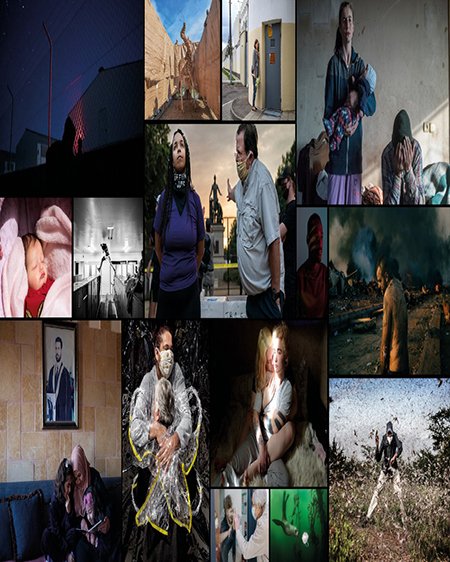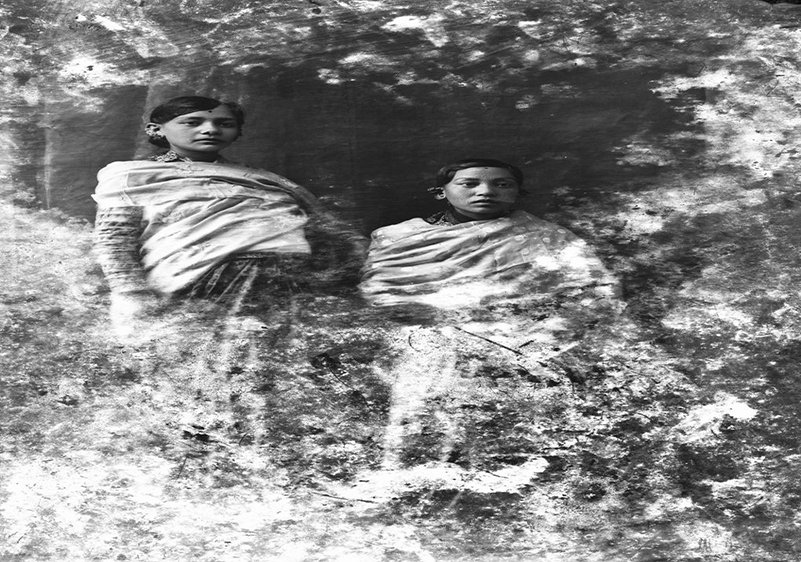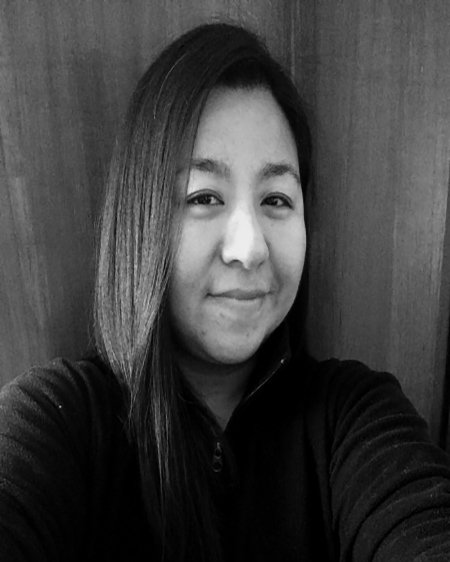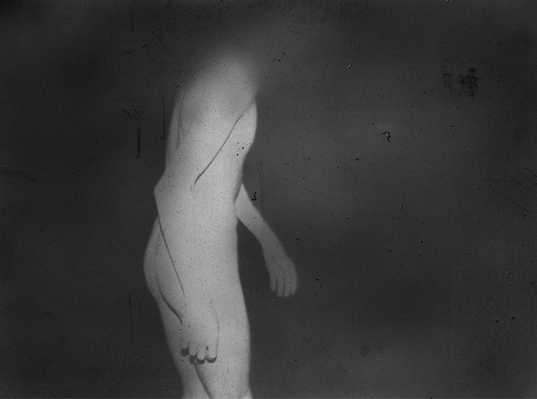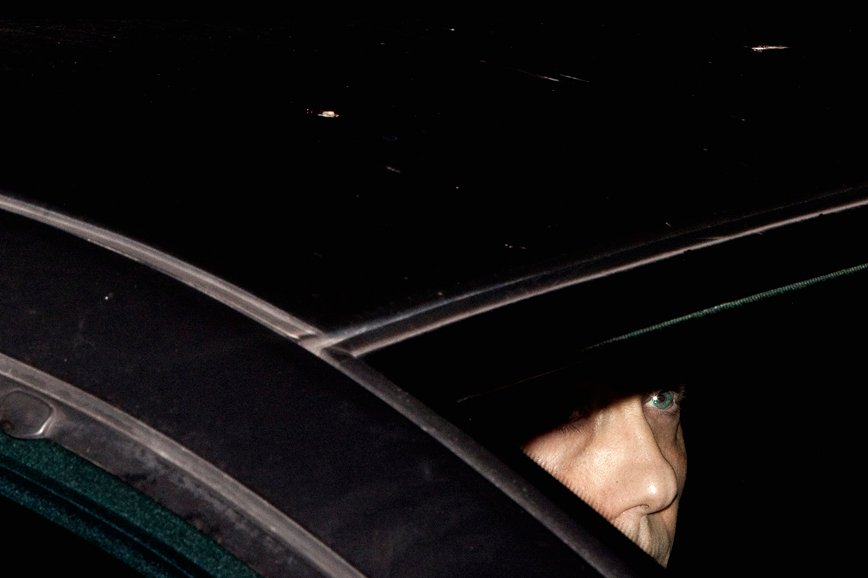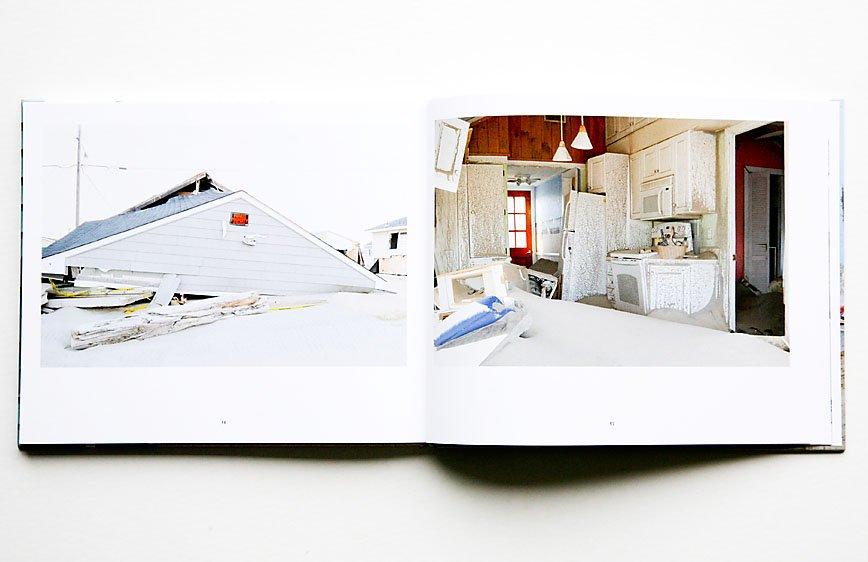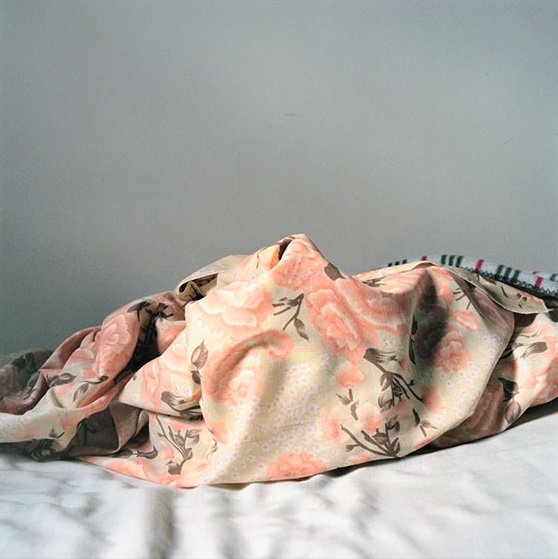Nepal –
BEING NEPALI in the New Federal Democratic Republic of Nepal
Tharu. Chhetri. Danuwar. Gurung. Lohar. Newar. The Nepali people belong to 102 ethnicities, castes and other groups and speak 92 living languages. Amidst sweeping political changes, it has become very important to define oneself along ethnic lines, to show where loyalties lie.
There has been injustice tied to differences. The fight for rights and recognition is genuine and important. But how can the people of Nepal safeguard themselves from short-sighted, power-hungry identity politics? Will drawing federal state lines along ethnicity really ensure better livelihoods and brighter prospects for future generations?
What will it mean to be Nepali in the new Federal Democratic Republic of Nepal? With these portraits, I attempt to highlight the diversity of the Nepali people by concentrating on each individual’s unique facial features. I strip each individual bare of all stereotyped ethnic identifiers, such as clothing and jewellery. By making the portraits as uniform as possible, I attempt to find similarities amidst differences.
Emaho caught up with photographer Nayantara Gurung Kakshapati, co-founder of Photo.Circle
Manik : How did photography become your chosen profession?
NGK: I was always a visual person, this I realised when I was really young. Images have always made lasting impressions on me. I was trained in the social sciences and eventually photography became the medium I could best engage with social issues and life in general.
Manik : Your work focuses solely on Nepal. What made you return home after studying abroad?
NGK: While in high school, I used to volunteer for an NGO that worked in reproductive health acrossNepal. I got the opportunity to travel across the country and see how things worked, or did not work. Experiencing that when I was young really helped to shape my world-view. When I left for college to theUS, I always knew I wanted to come back home and work inNepal. Being away helped me see a bigger picture. Since being back, I haven’t had the time to step away – there is so much happening here inNepal – so many stories to tell, so much work to be done.

Street exhibition on refugee situations around the world.
Manik : In your documentation of the ecological threat in the Khumbu or Everest Region, you’ve highlighted two contradictory beliefs among the people. What brought these two beliefs to your notice?
NGK: The mountains are what Nepal is best known for. People fly in from all over the world to witness their wonders. But these mountains and the people who inhabit them are in threat. Khumbu, like most parts of Nepal, straddles age-old knowledge and tradition as well as and contemporary life style and technology. Its people react to the climate changes and threats based on both these realities. This is the contradictory belief system that exists and what the portrait and interview series that I produced with Prawin Adhikary tries to address.

The exhibition “Our Gurkhas” on view in Pokhara
Manik : Your story ‘Being Nepali in the New Democratic Republic of Nepal’ highlights the ethnic, linguistic and cultural diversity of the region by following a very fixed pattern for the portraits of these people. What was the idea here?
NGK: The idea was to portray diversity but also draw on common denominators. Keeping the stylistic approach very simple and uniform was an attempt to draw attention to these common denominators within the vast diversity that exists among the Nepali people.

Street exhibition of Being Nepali
Manik : ‘The Long Wait for Justice’ is Purnimaya Lama’s tragic story. What made you choose her as your subject? How did you get so up close and personal with your images?
NGK: Purnimayadidi is like no one I’ve ever met before. In the face of such odds and hopelessness, she has continued to fight. She and her family were very kind to let me into their lives. Getting up close and personal is always about putting in the time. This story was made over a period of six months. Amnesty International, who commissioned me to produce it, was very willing to invest the time too. Since it’s been published, I have been in touch with Purnimayadidi occasionally. Unfortunately, her long wait for justice still continues. It has been difficult to come to terms with the fact that the political parties see this as nothing but a big power game. They will not allow the law of the land to take its course because it will upset their power game. I want to continue to work on these issues because I feel it is really important for people to continue to be reminded.

Launch of new photo book Kathmandu, A Pocketful of Momos
Manik : What is the aim of photo.circle, the collective you founded for amateur and professional photographers in Nepal?
NGK: It started out as a space for photographers or people who aspire to work with photography to come together to create, share and learn. Our goals are mainly to strengthen photography education and distribution in Nepal. It pretty much has been a DIY (do-it-yourself) process – no photography school- let’s organise workshops; no photography teachers- let’s learn how to teach; no photo book publishers- let’s publish our own books; no galleries that host photography- let’s rent space or show work on the streets, so on and so forth. It’s been fun, and of course a lot of hard work.
Manik : Photo.circle has held workshops with some renowned photographers including Munem Wasif ,Philip Blenkinsop and many others. What has the response for these workshops been like?
NGK: We have been incredibly lucky and honoured to have teachers like Philip Blenkinsop and Munem Wasif and a host of others including Shahidul Alam, Tanzim Wahab, Sohrab Hura, Frederic Lecloux, Mads Nissen, Soren Pagter, Jodi Bieber and Tina Ahrens among others who have come to teach for us. Each of these professionals has invested a lot of time and effort and heart into the young and growing Nepali photography community and we are really grateful.

©Photocircle
Manik : Recently, you also set up the Nepal Picture Library – a one of a kind online photography archive with some real old treasures – as part of an initiative by photo.circle. How did it strike you?
NGK: The idea came about when we were trying to put together a course on history of Nepali photography. We realised there was very little material to work with. So in true DIY fashion we have ventured out to set up our own photo archive. We are digging up all sorts of old photo collections – including family collections from family albums, inviting researchers to research and write about them and organising workshops, exhibitions and other events to make them accessible to the public. Eventually we would like the archive to be a searchable digital database that photography students, artists, researchers, anthropologists, curators, editors, historians – anyone interested in engaging with the history of Nepal – can access online. We are not trained as archivists so we are training ourselves along the way. Archiving is a whole new world and we are slowly discovering the challenges and joys.

Workshop with photographer Mads Nissen.
Manik : How has photo.circle grown since its inception 5 years ago?
NGK: We plan to continue organising workshops and other learning opportunities, exhibitions, talks and screenings. The long-term plan is to establish a photography department at the Kathmandu University School of Arts and Design. We will continue to publish and market photography – hopefully bettering the quality of the books and reaching wider audiences around the world. It would be so great to set up a permanent gallery and residential space for photography in Kathmandu, but at the moment we do not have the resources for that. (If there is anyone out there who is reading this and can help make this dream come true, please contact us!) The archiving work will be a long-term endeavour; we hope to attract more researchers and others who will contribute to and engage with the archive. All this we hope to do with the continued support of our sponsors and partner organizations including; the Embassy of Denmark in Nepal, the Danish Centre for Culture and Development, the Danish School of Journalism and Media, the Prince Claus Fund, PATHSHALA South Asian Media Academy, DRIK, Kathmandu University Centre of Arts and Design, and UNESCO among others.
Manik : In September 2012, photo.circle organised a five-day workshop for South Asian photographers who have been working on a long term projects, mentored by Sohrab Hura. What was the outcome of the workshop like?
NGK: Sohrab is a brilliant teacher. He is young and other young photographers connect with him very easily. But he has an amazing amount of experience and exposure to photography and photographers from around the world. His approach is very open-ended. The goal is not to have a standard outcome fit to submit to awards or magazine editors but to really push each participant, and each body of work to its maximum potential. He always pushes people to work long term. The workshop group plans to meet in Kathmandu again March/April 2013 to see how far each photographer has been able to push their work and evaluate future directions.

Workshop with photographer Sohrab Hura.
Manik : You are also the director of Film South Asia, a festival for South Asian documentaries! Tell us a little about your work with the festival.
NGK: The festival has a rich history – it was the first ever festival for documentaries inSouth Asia. And it has an amazing network of inspiring storytelling from across the region and world. So many storytellers are working across the mediums of film and photography now- to me it felt very natural to want to get involved. The next festival is scheduled for October 2013. Call for submissions will be announced in January 2013.
Manik : Tell us a little about Travelling Film South Asia.
NGK: Well, Travelling Film South Asia (TFSA) takes place throughout the year. TFSA is a package of 12 films that is curated to travel around South Asia and the world, promoting the documentary tradition and the festival. Every year the TFSA package travels to 40-50 venues around the world hosted by universities, activist forums, other film festivals, private organisations, etc. It is a fantastic way to give the festival a longer life span and engage audiences far and wide.

Presentation night featuring Philip Blenkinsop and his students
Manik : Do you see photography catching on among Nepali women? Do you believe that women are more sensitised to documenting social issues than men?
NGK: There are at least 10-12 new women photographers who have ‘entered the scene’ in Nepal in the last three-four years. But I think the question is if they can keep at it. I know some very talented and hard working women photographers who have chosen to or maybe been forced to give photography up as a profession because children and family and such factors come along. Photography is of course, a very male dominated profession in Nepal, as it is around the world. Perhaps women can empathise more openly; often that is what is most required. From experience, I know that often it is easier to gain access because of this.

Nayantara during a presentation.
Manik : What projects are you currently working on?
NGK: I am continuing to work on my Being Nepali series. I would like to show it on the streets all around Nepal. I am also starting to work on a series on sexual violence. I am taking on a few assignments here and there. But to be honest, most of my time goes into organisational and managerial duties for photo.circle and other related projects. I am trying to learn how to strike a balance, and to perfect the juggling act!

Exhibition “Nepal in Paris” at the French Alliance Foundation, Paris.
Photography Interveiwed by : Manik Katyal and Marukh Budhraja
Pictures by : NayanTara Gurung Kakshapati

Kathmandu– A Pocketful of Momos
Reviewed by Colin Fernandes
Edited/Curated by Philip Blenkinsop
Published by photo.circle
An image of a baby in a butcher shop maybe an unlikely cover to a photographic book on Kathmandu, but for curator Philip Blenkinsop, it’s exactly the kind of non-postcard glimpse he’d like to show strangers to Nepal.
Gone are the stereotypical picturesque countryside landscapes; replaced instead with intense squalor and fetid by lanes that ooze far more charisma than a monochromatic mountain range.
Comprised of the works of 38 young student photographers from Bangladesh, Nepal and Norway, Blenkinsop says it’s “the result of their quests…an undulating smorgasbord of life’s seemingly insignificant moments; fleeting scenes which when viewed collectively, gift us with a unique experience of Kathmandu as rich and potent as the city itself.”
Puritans however may find it difficult to navigate the book that is devoid of captions and individual credits, but that is also another charm of this experience. “There are no clearly written guidebook direction for what you seek,” says Blenkinsop, “it is to be found in the lifetimes between one’s hopes and one’s expectations…those off-guarded moments when the mind has wandered from its itinerary, disoriented, unguarded, vulnerable and is ambushed by an exchange which melts back into the shadows of the street like a phantom, its disappearance, as assured as its arrival was unexpected.”

PHOTO CREDIT: BENJAMIN A. WARD

PHOTO CREDIT: ARIFUR RAHMAN

PHOTO CREDIT: KISHOR K SHARMA

PHOTO CREDIT: PRASIIT STHAPIT

PHOTO CREDIT: TAPASH PAUL

PHOTO CREDIT: MARTIN SLOTTEMO LYNGSTAD
